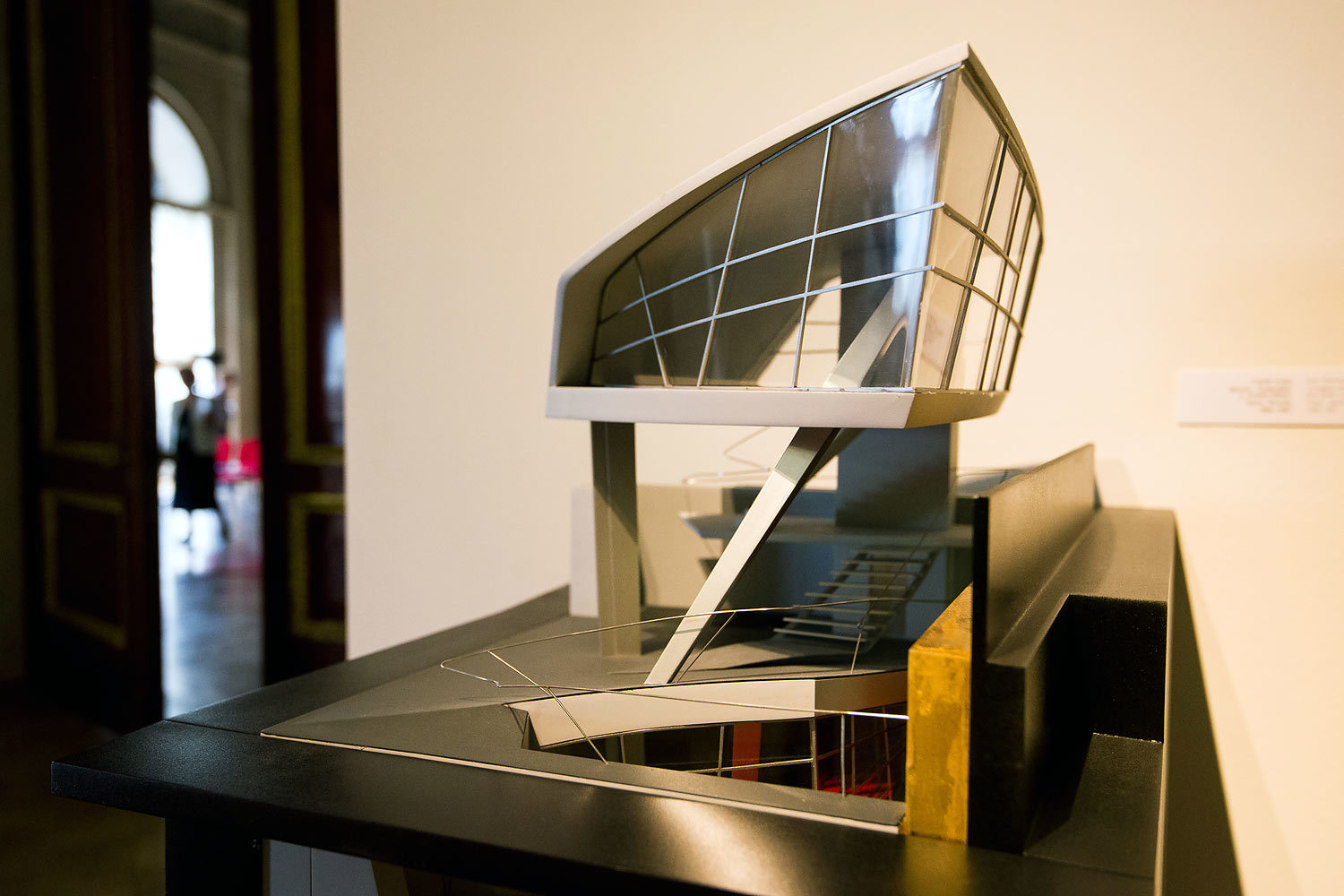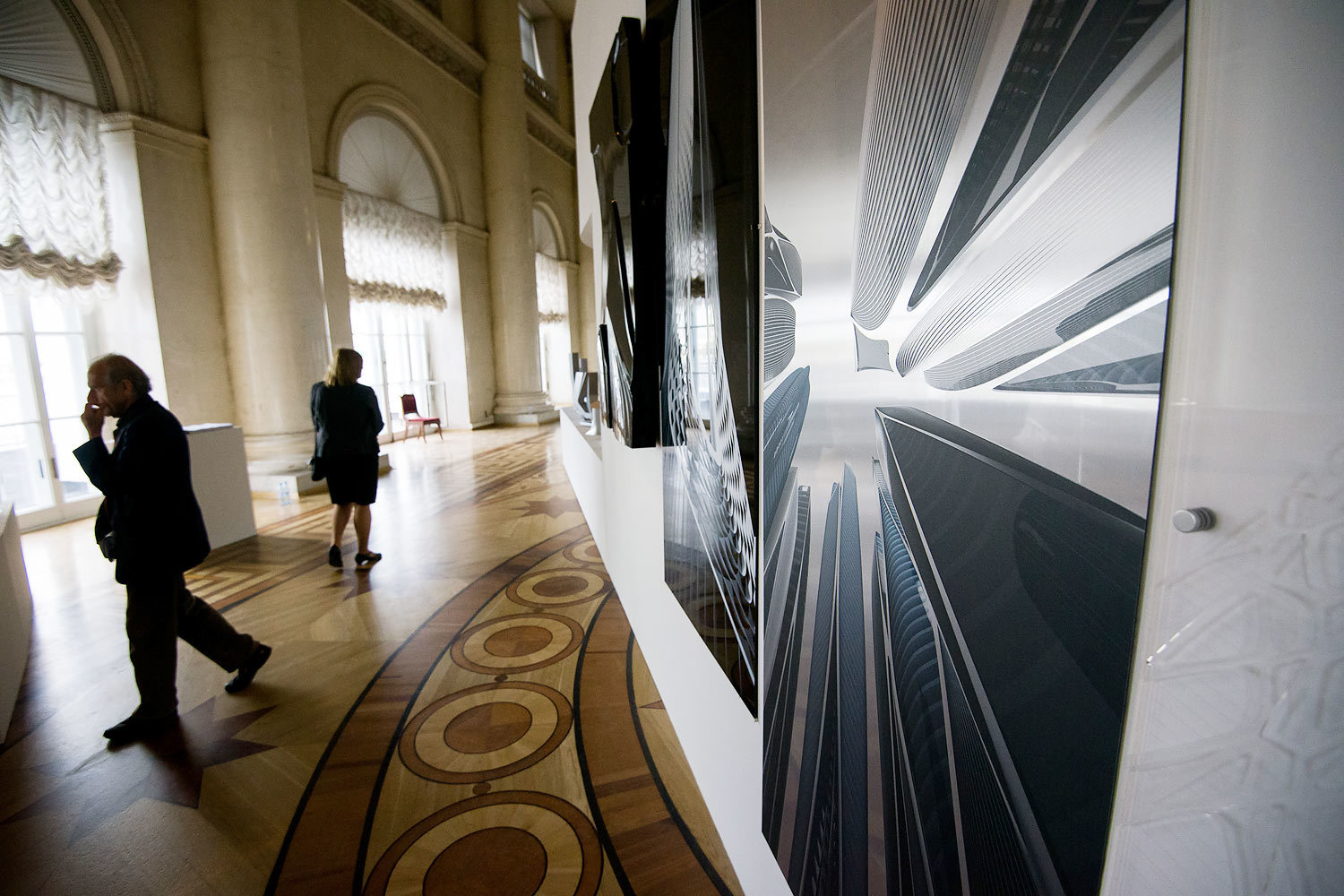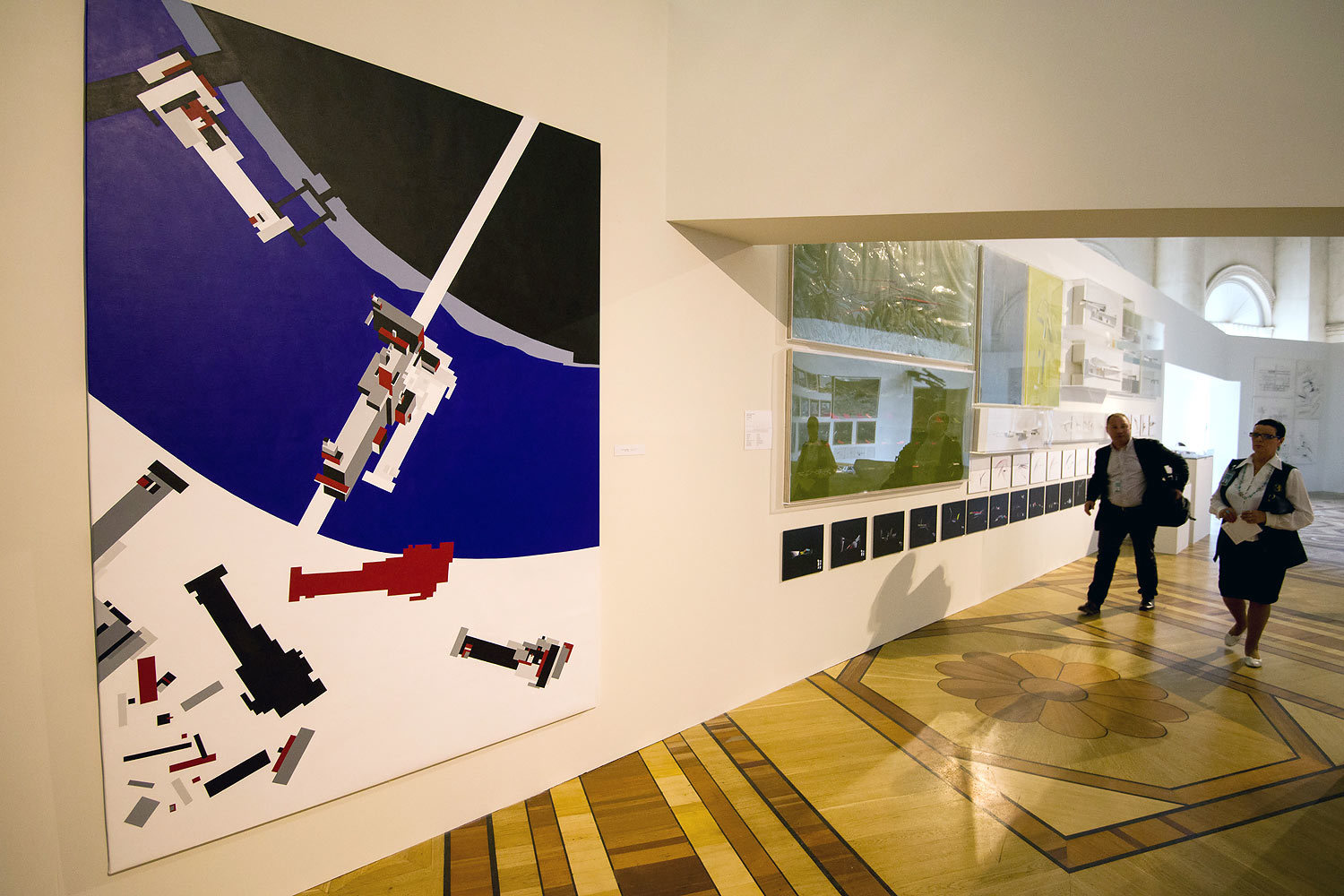The State Hermitage Museum in St. Petersburg is hosting the first retrospective exhibition in Russia of British architect Zaha Hadid.
The project was prepared specifically for the Nicholas Hall of the Winter Palace – the main ceremonial historical interiors of the museum. The exhibition, organised by the State Hermitage Museum and Zaha Hadid architects, includes 300 models, drawings, photographs, sculptures and design objects: experimental designs of the 1980s, first projects and, of course, works of recent years, among them the Guangzhou Opera House in China; the Heydar Aliyev Center in Baku; the MAXXI: Italian National Museum of 21st Century Arts in Rome; the London Aquatics Center; Signature Tower and many others.

Zaha Hadid is internationally known for her built, theoretical and academic work. Each of her projects builds on over thirty years of exploration and research in the interrelated fields of urbanism, architecture and design.
Born in Baghdad, Iraq in 1950, Hadid studied mathematics at the American University of Beirut before moving to London in 1972 to attend the Architectural Association (AA) School where she was awarded the Diploma Prize in 1977. Hadid founded Zaha Hadid Architects in 1979 and completed her first building, the Vitra Fire Station in Germany in 1993. Hadid taught at the AA School until 1987 and has since held numerous chairs and guest professorships at universities around the world including Columbia, Harvard and Yale. She is currently a professor at the University of Applied Arts in Vienna. In 2004 Zaha Hadid, founder of Zaha Hadid architects, was awarded the Pritzker Architecture Prize (considered the Nobel Prize of architecture) within the precincts of the State Hermitage Museum, in the Hermitage Theater.
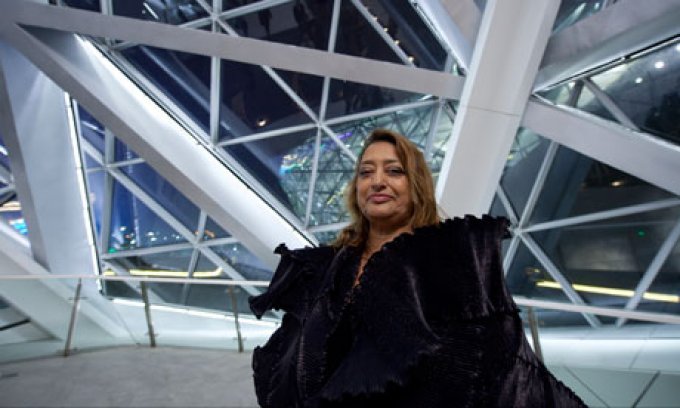
Working with her senior office partner, Patrik Schumacher, Hadid’s interest lies in the rigorous interface between architecture, urbanism, landscape and geology; her practice integrates natural topography and human-made systems, leading to innovation with new technologies, as well as looking at nature's coherence as a literal option for an architecture that is driven by new developments in digital design and enhanced manufacturing capabilities.

Zaha Hadid’s early projects were very much influenced by the Russian avant-garde, in particular by the work of Kazimir Malevich and other Suprematist artists who envisioned a new idea of space and urbanism.
The Peak, Leicester Square, Berlin 2000, Tomigaya Building, Malevich Tektonik – albeit unbuilt – represent Hadid’s vital exploration and experimentation towards a new architecture to address the predicted complexity, connectivity and flexibility of our future.
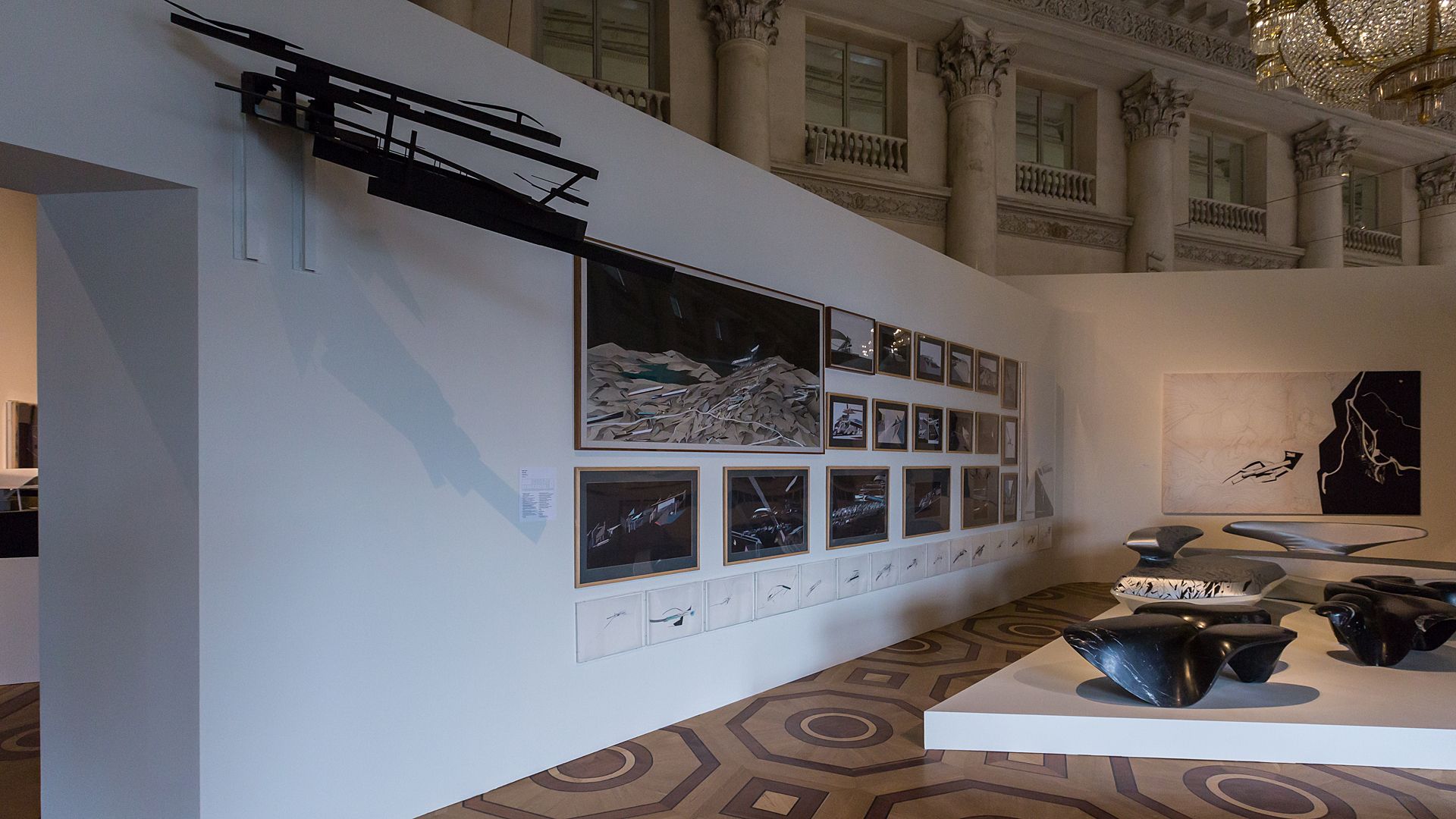
The MAXXI: Italian National Museum of 21st Century Arts in Rome, the London Aquatics Center for the 2012 Olympic Games, and the Heydar Aliyev Center in Baku are built manifestos of Hadid’s quest for complex, fluid space. Previous seminal buildings such as the Rosenthal Center for Contemporary Art in Cincinnati and the Guangzhou Opera House in China have also been hailed as architecture that transforms our ideas of the future with new spatial concepts and dynamic, visionary forms.

In 2007, Zaha Hadid won a competition to design the Heydar Aliyev Center. The building, which has become a major cultural center of Azerbaijan, breaks from the rigid and often monumental Soviet architecture that is so prevalent in Baku. Designed as a true embodiment of Azerbaijani culture, it symbolizes the optimism of the people of Azerbaijan.

This building is admired everyone – both those who have been to Baku several times, and those who came here for the first time. International stars who come here on tour, and kids who come here on field trips also admire it. The Heydar Aliyev Center immediately appeared on the list of the most amazing structures of the 21st century shortly after the construction.

The total area of the center is 15.93 hectares. The huge building includes three main sections: the three-story Museum of Heydar Aliyev, 9 floors of exhibition halls with galleries, cafes and offices, and the auditorium has four levels – a concert hall, auditorium, two multifunctional meeting rooms, rooms for official meetings and a media center. The main exhibition of the museum is a wonderful example of design, combined with high technology.

The exhibition, which runs until September 27, was prepared as part of the architectural program of the Hermitage 20/21 project, which was designed to collect, study and exhibit works of the 20th-21st centuries. The curator of the exhibition is Ksenia Malich, a researcher of the Department of Contemporary Art at the State Hermitage Museum.

Zaha Hadid is currently working on a diversity of projects worldwide, including the New National Stadium for the Tokyo 2020 Olympic Games, the Sleuk Rith Institute in Phnom Penh, Cambodia and 520 West 28th Street in New York, the Central Bank of Iraq and the Grand Theatre de Rabat.

